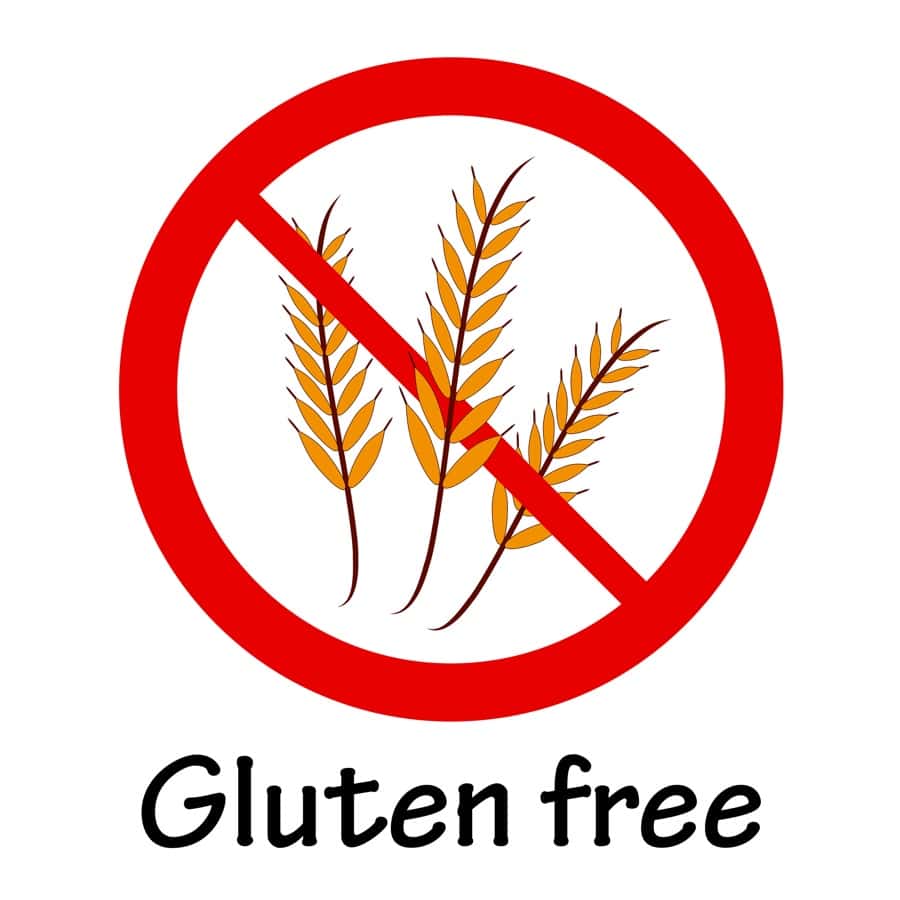
People with celiac disease react badly when they consume gluten, a protein found in wheat, barley or rye. Their immune systems go into overdrive and attack the lining of the intestine, resulting in damage and difficulty absorbing needed nutrients. The only treatment at this point is to follow a strict gluten-free diet.
Is a Gluten-Free Diet Really Gluten-Free?
Sticking to a gluten-free diet is easier said than done, according to the results of a new study (Syage et al, American Journal of Clinical Nutrition, online Feb. 26, 2018). The scientists analyzed detailed stool and urine data from two previous research projects and discovered that even people following a gluten-free diet were getting around 150 mg of gluten a day. Some folks were getting considerably more, pulling the mean gluten consumption up to 300 to 400 mg daily.
How Much Gluten Is Safe for People with Celiac Disease?
Experts believe that people with celiac disease could take in 10 mg per day without consequences. At higher levels of gluten intake, however, they continue to suffer intestinal damage and all of its consequences.
This research suggests that even people who are conscientious about a gluten-free diet may be getting too much gluten. The authors recommend that anyone with celiac disease who continues to suffer symptoms despite adhering to the recommended diet should get a dietitian’s help in finding whether there is gluten contamination in their food, medication or even cosmetics such as lipstick.
The Popularity of a Gluten-Free Diet:
Ten or twenty years ago, people following a gluten-free diet had a difficult time. Foods like pasta or crackers were not available in gluten-free versions. Now, that has changed. Baked goods without gluten are available in many supermarkets as well as online. Celebrities tout the virtues of a gluten-free diet.
Who Needs a Gluten-Free Diet?
Celiac disease is an autoimmune condition in which gluten triggers damage of the lining of the small intestine. Gluten, a protein found in barley, rye and wheat, is found in a host of foods that contain flour. People with this condition must follow a strict gluten-free diet to avoid serious complications. Recently manufacturers have been producing gluten-free alternatives to bread, pasta and other foods that are normally made from wheat. Such options make eating easier for those with celiac disease. They are not the only people who buy them, however.
A study published in JAMA Internal Medicine (Nov. 2016) found that the proportion of people diagnosed with celiac disease did not change significantly in the five years from 2009 to 2014. It remained somewhere around 1 person out of 150.
Who Else Is Eating Gluten-Free?
In the same five years, however, the number of people following a gluten-free diet approximately tripled. The proportion went from 0.5% to 1.7% of the population studied. This study group was made up of about 22,000 Americans in the National Health and Nutrition Examination Survey, or NHANES. Some of these people report they simply feel better on a low-gluten diet. Others may have hopped on a fad.
An invited commentary published in the same journal warns doctors not to dismiss individuals who report they are avoiding gluten. Some find that reducing gluten in their diets makes them feel better. Even though they don’t have celiac disease, some may have non-celiac gluten sensitivity. Others may be sensitive to other components of wheat. And some may be following a diet that is low in fermentable carbohydrates, whether deliberately or as a side effect of their gluten-free diet. This too can help some people overcome uncomfortable digestive symptoms.
Sharon in Murrieta, CA, said:
“I’ve had many digestive problems, and I truly notice the difference after eating foods that contain gluten. I feel bloated, less full, and my digestive system works faster.”
Laura noted:
“I went gluten free over a year ago. I have Hashimoto’s and I read that gluten can exacerbate this condition. About four months ago, I started eating gluten again. Within a week, the lymph glands in my neck swelled up. I knew immediately it was the gluten. It took about three weeks to get back to normal. No more gluten for me!”
Rob in New Zealand added:
“I don’t have celiac disease, but I have an increasing list of other conditions. A couple of years ago I was desperate. I could not stand more than half a minute due excruciating pain, and I needed help to stand up or get in or out of bed.
“Totally housebound, it looked as though I would need to be put into care–in my 50s! The changes resulting from going entirely grain free (not just gluten free) have been dramatic. I no longer need my asthma inhalers and I was soon free of pain. If I inadvertently consume even a little bit of grain I relapse into two weeks of pain. I’ve learned my lesson.
“It has been a shock to learn how many toiletries such as hand creams and bath gels include grain-based ingredients. They have the same effect. Going gluten free is definitely not a fad. No one would go to this bother and expense if they didn’t benefit.”
Learn More:
To learn more about celiac disease and how to follow a gluten-free diet, you may wish to listen to our interview with Dr. Joseph A. Murray of the Mayo Clinic in Rochester, MN. It is Show 1100: What Is the Story on Celiac Disease?
You may also find our Show 1049: Do You Need a Gluten-Free Diet? with Dr. Peter Green and Rory Jones, co-authors of Gluten Exposed, of interest.

